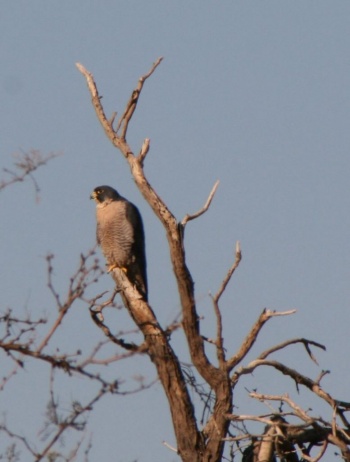Sbarnhardt (talk | contribs) (→Contact Details: Added Contact Details) |
Sbarnhardt (talk | contribs) (Added Maps section and Google Maps & External Link for Death Valley National Park) |
||
| Line 79: | Line 79: | ||
==External Links== | ==External Links== | ||
| − | # | + | #[https://www.nps.gov/deva/index.htm/ Death Valley National Park] |
| + | |||
| + | ==Maps== | ||
| + | #[https://goo.gl/maps/jLxSx5Qzw1byJn2r8 Death Valley National Park on Google Maps] | ||
| + | |||
<br /> | <br /> | ||
{{GSearch|Death_Valley_National_Park}} | {{GSearch|Death_Valley_National_Park}} | ||
Revision as of 11:37, 4 August 2020
| This article is incomplete. This article is missing one or more sections. You can help the BirdForum Opus by expanding it. |
Overview
A valley named Death would probably leave you thinking just that, death. As in nothing lives there and certainly not birds. If that’s what you thought, you would not be alone.
You are, after all, looking at heat extremes with a lack of plentiful, drinkable water. It is a place that is not without a history of personal risk. It is, after all, Death Valley.
Granted birding will likely take on a different look here than in lush wetlands. You may have to go up from the desert floor into the mountains or choose your time of day or season a little more carefully, but with some planning, and preparation for the elements, you may be surprised.
Birds
Notable Species
That birds are even found in such an, at times, austere environment at all could be considered by some as notable.
Add to that, it’s a stop-over on spring and fall migrations, is another notable fact.
All this coupled with there being a random permanent resident in the area makes this a notable area and one well worth looking into.
Rarities
A few rare sightings here have included the Bewick's Wren, Cactus Wren, Cedar Waxwing, American Kestrel, among others that can be found in a Birds of Death Valley checklist available from the United States National Park Service[1].
Check-list
Birds you can see here include:
A Greater Roadrunner is a possibility, as is the Sage Thrasher, Peregrine Falcon, Rock Wren, American Robin, House Sparrow, House Finch, and Dark-eyed Junco,
Other Wildlife
In addition to a large number of bird species in, and passing through, there are bats, multiple species of mice, squirrels, rabbits, carnivores, burros, and horses. Amphibians, reptiles, and deer round this out.
Site Information
History and Use
According to Encyclopaedia Britannica Online[2], Death Valley received its name after a group of immigrants traveling through the area in 1849, lost a member of their party due to the hardships encountered. It was the province of Native Americans then until the late 1860s and 70s when geologic interests were noted and certain mineral deposits were discovered in the area. These deposits led to mining and towns sprung up around those concerns. However, when the deposits ran out, they tended to become what is commonly called ghost towns, some of which are still visible.
Areas of Interest
Scotty’s Castle, or Death Valley Ranch, is, at a minimum, a curiosity in a place you would not probably expect something like this. It’s a getaway constructed by a wealthy man for him and his wife. The name Scotty comes into play because of a claim made by a friend of the builder about its construction. Unfortunately, it was damaged by a flood and is closed, for the present, to all but guided tours by area Rangers[1].
A venture into Death Valley National Park would not be complete without taking in a ghost town, or two. Consult the Park’s website for information about them[1].
Suggested sites for birding, in addition to what you might see during your travel to the various sights, can also be found on the Park’s online presence under the Learn About the Park option.
This whole park itself is an area of interest. It’s hot and, at times, inhospitable, but it’s also unique. And that, coupled with what really is there, combines to make this worthy of a high spot on your list of possible places to go birding.
Access and Facilities
"to do"
Contact Details
By Mail
Death Valley National Park
P.O. Box 579
Death Valley, CA 92328
By Phone
Visitor Information
(760) 786-3200
By Fax
(760) 786-3246
By Email
By use of an email link found in the Park’s website contact details
References
- US National Park Service - Death Valley National Park website, August 3, 2020
- Encyclopaedia Britannica Online - Death Valley, August 4, 2020
Recommended Citation
- BirdForum Opus contributors. (2025) Death Valley National Park. In: BirdForum, the forum for wild birds and birding. Retrieved 14 January 2025 from https://www.birdforum.net/opus/Death_Valley_National_Park
External Links
Maps





